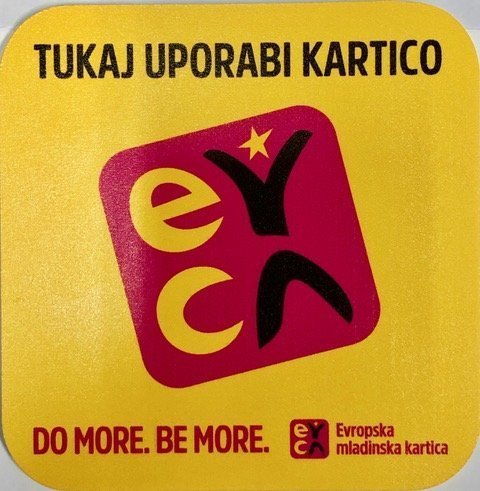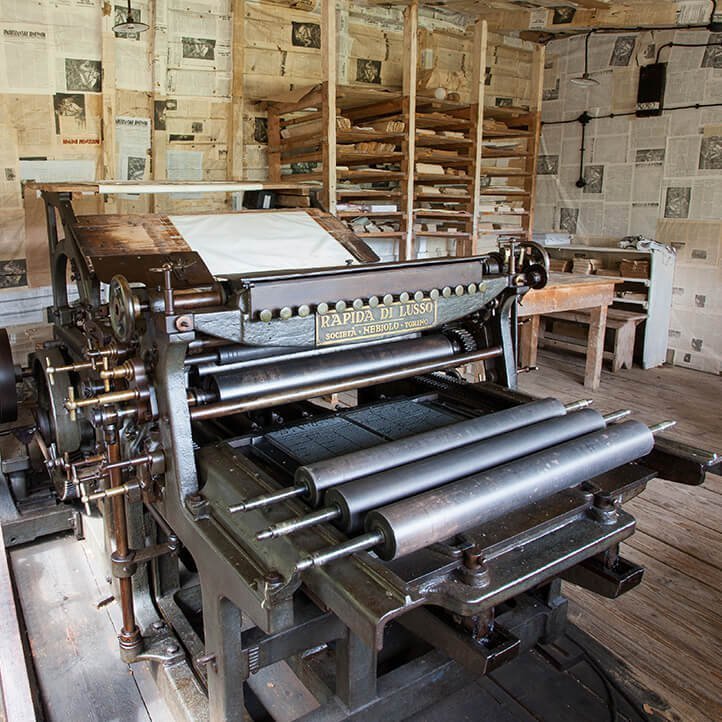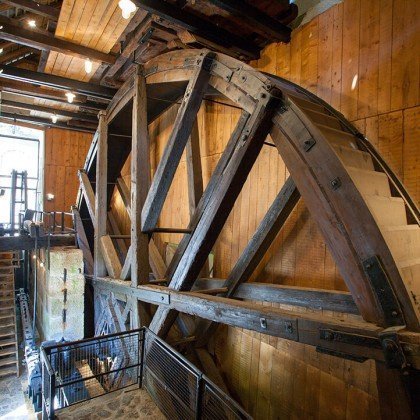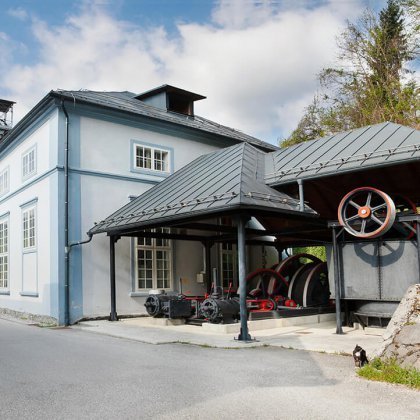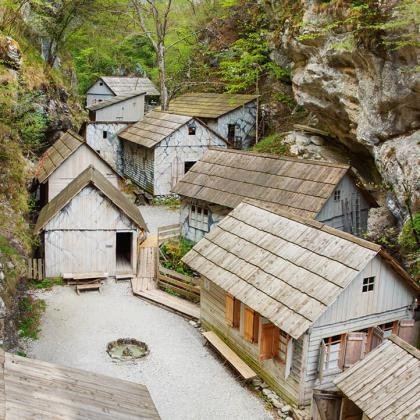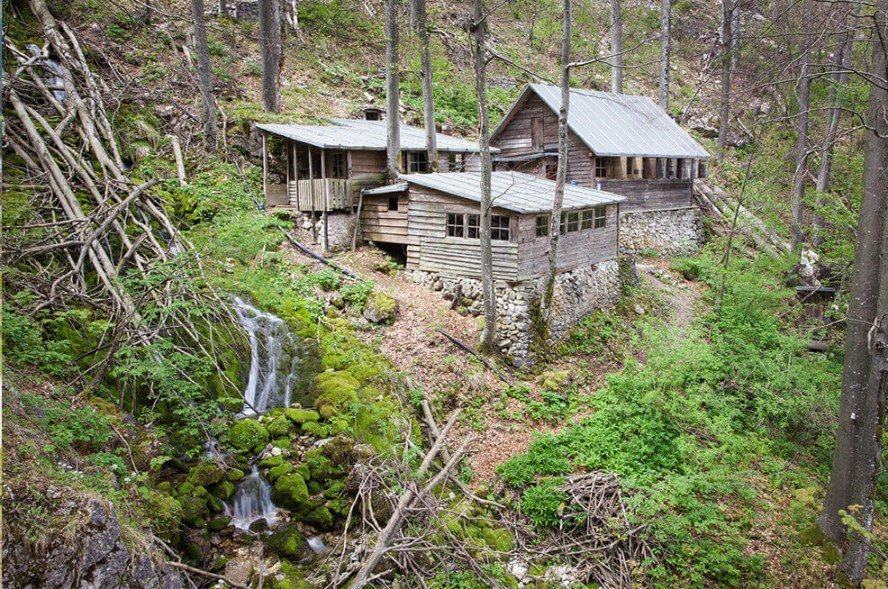
What is the Slovenija Partisan Printing Shop?
Today, the Slovenija Partisan Printing Shop is among the most authentically preserved monuments of the Second World War in Slovenia, and was one of the 38 secret partisan technical groups operating in Slovenia under the organisation of the resistance partisan movement. The printing shop complex consists of six wooden huts positioned by a creek in the difficult-to-access ravine, V studencih: the power station hut, the restroom, the foundry with a bedroom in the attic, the engine room, bookbinding room and a kitchen with a dining room. The printing shop become known and important as the Partisan Journal was printed there between September 1944 and the end of the war it was the only daily printed newspaper of any resistance movement in Europe. Since 13 May 1945, the tradition of the Partisan Journal has been continued by the Primorska Journal (Primorski dnevnik) in Trieste.
The Slovenija Printing Shop is fully preserved and is a cultural and historical monument, open to visitors since 1947. Both press machines are still functioning. With the assistance of a caretaker, visitors are able to print their own leaflet to remember their visit to the printing shop.
Why partisan printing shops?
The partisan press played an important social role in the National Liberation War of Slovenia. It called for armed resistance against the invader and was a counterweight to the extensive hostile propaganda, which is why the Slovenian partisan leadership organised the establishment and operation of numerous illegal printing shops. The need for the written Slovene word was particularly high due to the long-standing fascist authorities and their denationalisation policy in the Primorska region. The first illegal cyclostyle techniques were in use here as early as in 1941. By reproducing circulars, proclamations, newspapers and radio transmissions, the partisan leadership briefed the people on the events at home and around the world. At the beginning of 1944, the partisan leadership decided to establish a larger printing shop and use the printing machine to print the material faster, nicer and in a larger amount.

Where and how did the Slovenija Partisan Printing Shop operate?
On the advice of a local Peter Koge from Vojsko, they chose a secret, difficult-to-access place a little below the edge of the 1,000m high Vojsko Plateau (Vojskarska planota) over the valley of the Kanomljica River. It was build on the location V studencih, in the woods next to the torrential creek, which allowed the production of own electricity to power a large printing machine. In summer of 1944, the huts were assembled in the nearby Gačnik settlement, and then the numbered beams and boards were transferred at night to the location. Colleagues from the partisan printers in Milan bought a large and modern electric high-speed printing machine, transported it across the enemy territory, past many dangers, and delivered it to Gorizia and Vojsko, and then struggled to transfer it in parts to the printing shop’s engine room. At the same time, the smaller TIGL printing machine was bought.
The Slovenija Partisan Printing Shop started operating on 17 September 1944 and the very next morning, the special couriers took 4,000 copies of the Partisan Journal into the world. The printing shop was operated until 1 May 1945, and between 40 and 50 people worked there. In less than one year of operation, 228 issues of ten different newspapers were printed in over one million copies, various brochures, leaflets and posters, multi-colour wraps and 44 other tiny prints; in total: 313 various prints on 1,247 pages in 1,394,311 copies. The engraver made linocut illustrations for printed material, as well as various seals for authorities or military units, some even for the fake German documents.
Partisan Journal
The first issue of the Partisan Journal was published in a cyclostylated form in Zakriž near Cerkno on 26 November 1943, and the first printed copy with a sequence number 235 on 5 September 1944 in the printing shop named Julij 63, later renamed Doberdob. The first printed edition from the Slovenia Partisan Printing Shop saw the light of day on 18 September 1944. The last issue in this printing shop was printed on 1 May 1945, and the newspaper operated for another few days in Trieste. It was fist published under the name Primorska Journal on 13 May 1945; it is still being published today, in Trieste, as the successor of the significant Partisan Journal published during the war.
Programmes for adult groups
Slovenija Partisan Printing Shop in Vojsko
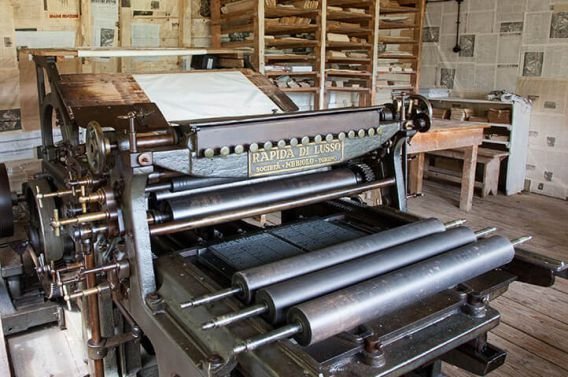
Between September 1944 and May 1945 in the ravine called V studencih, the Slovenija Partisan Printing Shop operated – the largest and technically best equipped partisan printing house in Primorska region during the Second World War. You walk through the mighty forest to the six wooden huts for the power station, the engine room, the foundry, the bookbinding hut and where the personnel lived. A caretaker prints a leaflet in memory of the visitor’s printing shop visit. How were did they print the Partisan Journal in war situations and secretly distribute it into the world every day?
School programmes
Slovenija Partisan Printing Shop in Vojsko
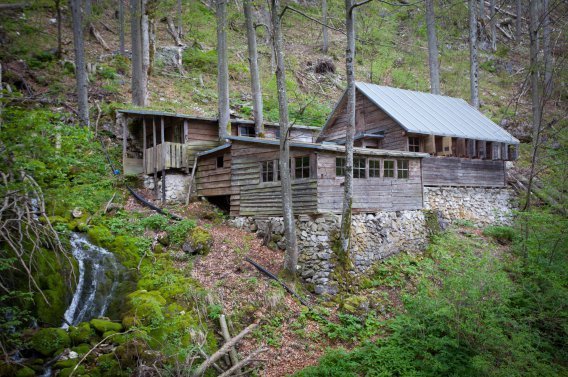
Opening hours
Slovenija Partisan Printing Shop
Special features
The easiest access to the Slovenija Partisan Printing Shop is along the 14km road from Idrija to Vojsko, with two trails leading to it. The first goes towards Vojščica (the partisan graveyard from 1945), the exit for the printing shop is after less than 2km of driving. The trail is also suitable for buses. From the carpark to the printing shop, there is about 20 minutes of steep downhill footpath. The second trail takes you from Vojsko towards the homestead at Hum. Go left at the first turn under the homestead to the forest road that brings you out under the printing shop. Then, there is a little over 5 minutes walking uphill. This trail is suitable for passenger cars only. We recommend you wear suitable footwear (trainers, hiking shoes). This trail is not advised for persons with physical disabilities.
